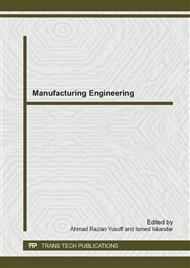p.73
p.78
p.83
p.90
p.96
p.102
p.108
p.114
p.118
Experimental Investigation on Static Mechanical Properties of Glass/Carbon Hybrid Woven Fabric Composite Laminates
Abstract:
Woven fabric reinforced polymeric composites are increasingly used in automotive and aircraft application in place of conventional metals due to their high specific strength. However in actual practice while using glass fabric layers, the large nominal size of the component was required and which facilitates increased total weight of the component. In the present investigation, glass laminate is modified and strengthened by interplying high modulus carbon fiber plies for attaining good strength to weight ratio. All laminates were fabricated using hand layup method. Mechanical properties such as tensile, flexural and impact strengths of dedicated and hybrid laminates were evaluated and reported.
Info:
Periodical:
Pages:
96-101
Citation:
Online since:
February 2014
Authors:
Price:
Сopyright:
© 2014 Trans Tech Publications Ltd. All Rights Reserved
Share:
Citation:


